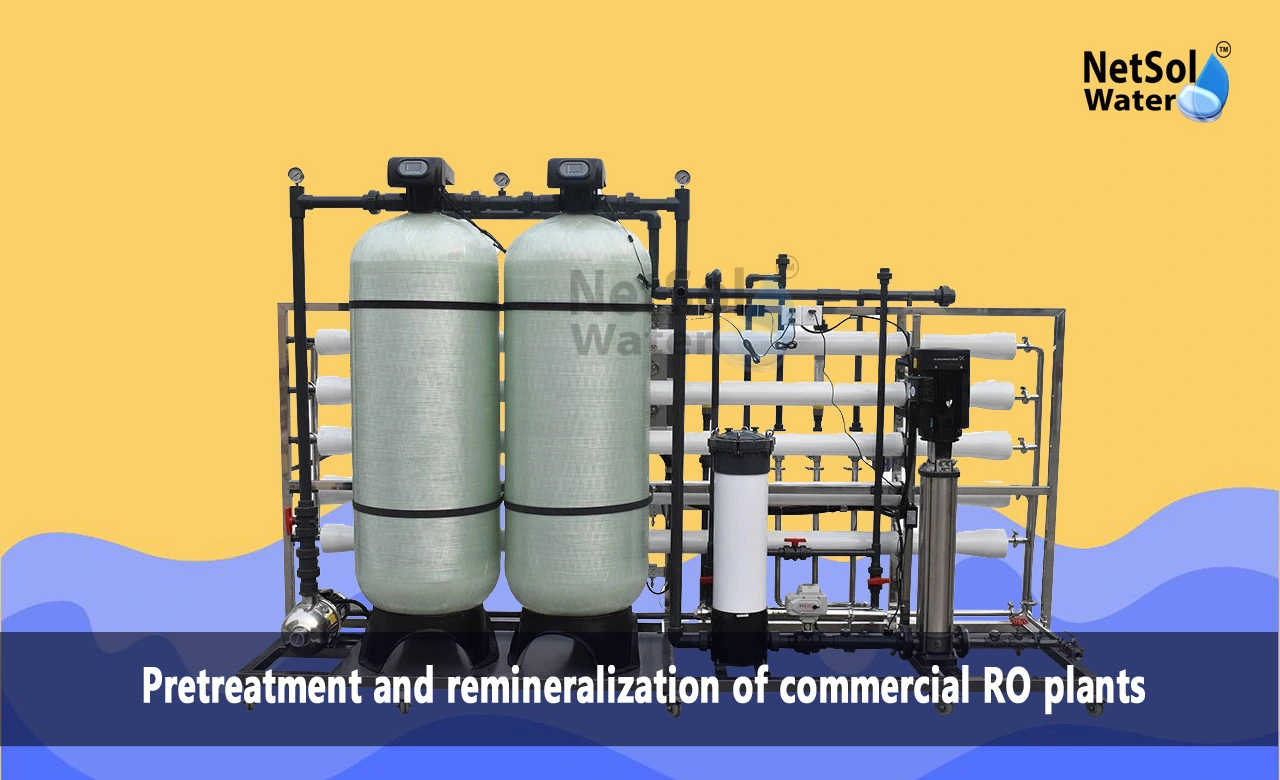Pretreatment and remineralization of commercial RO plants
Reverse osmosis has emerged as the leading desalination technology for producing potable water from seawater and brackish sources globally. However, the RO process itself is preceded by extensive pretreatment for conditioning feedwater and followed by remineralization for stabilizing the permeate before distribution. Optimizing these critical steps is crucial for commercial RO plant performance, operating costs, and permeate water quality.
We will examines strategies RO facilities can adopt across pretreatment and remineralisation to enhance operational efficiency.
Importance of Pretreatment and Remineralization in Commercial RO Plants
Effective pretreatment conditions the saline feedwater removing suspended particles, colloidal matter, and oxidising contaminants that could otherwise rapidly foul RO membranes. This prevents flux declines, frequent cleaning cycles and premature membrane replacements, extending operational lifespan.On the other hand, remineralisation by adjusting pH, alkalinity, and dosing calcium/magnesium prevents the aggressive permeate from corroding distribution pipes and makes them more palatable. Both steps ensure cost-effective RO process operations and potable water supply.
Goals and Treatment Stages
The primary goals of pretreatment systems are:
· Removal of suspended/colloidal solids and silt
· Disinfection controlling biogrowth
· Removal of organics,minimising fouling
· Conditioning feedwater chemistry and controlling scaling potentials
Typical treatmentstages for seawater involve stages like screening, multimedia filters/microfiltration, dosing antiscalants, dechlorination, and cartridge filters in sequence. Ultrafiltration or activated carbon may be included in brackish waters with higher organics.Post-RO remineralisation readjusts parameters like pH, alkalinity, and calcium hardness, stabilising the aggressive permeate to prevent corrosion impacts on piping networks and residences.
Pretreatment Optimization Approaches for Commercial RO Plants
Feedwater Quality Monitoring:
Installing online instrumentation like turbidity, conductivity, and organics sensors enables automatic filter backwashes/chemical cleanings based on quality deterioration.
Chemical Dosing Optimization:
Monitoring parameters like chlorine residuals and antiscalant concentrations allows modulating dosages to avoid overdosing/underdosing.
Process Sequence:
Adopting appropriate pretreatment sequences and technologies based on feedwater characteristics. Ex: Harsh waters benefit from ultrafiltration membranes over multimedia filters.
Enhancing Filter Performance:
Techniques like air-scouring, pulse backwashes, and deep bed designs extend run times between backwash/replacement cycles.
Remineralisation Enhancements for Commercial RO Plants
Calcite Contactors:
Passing permeate through packed calcite media dissolves calcium carbonate boosting pH, alkalinity, hardness, and LSI.
Lime/NaOH Dosing:
Precisely controlled addition of lime or caustic soda adjusts pH/alkalinity to non-corrosive levels cost-effectively.
Blending Approaches:
Blending RO permeate with brackish/seawater adjusts chemistry while reducing remineralisation chemical costs.
Integrated Monitoring & Control
Supervisory control and data acquisition (SCADA) systems provide a unified automation platform for:
· Processing online sensor data
· Modulating chemical dosing
· Controlling filter backwashes
· Feedback loops for process optimisation
· Minimizing manual oversight
This enables efficient process control, reducing costs while extending the lifespan of theCommercial RO Plants.
Evaluating Innovative Technologies for Commercial RO Plants
As desalination demands grow, RO plants increasingly adopt newer technologies offering potential benefits:
Subsurface Intakes:
Deploy subsurface galleries to reduce suspended solids in raw seawater,minimising upfront pretreatment requirements.
Inline Coagulation-UF/MF:
Combined in-line coagulation with membrane pretreatment replaces conventional clarifiers and filters.
Ion Exchange Softening:
For brackish waters, ion-exchange resins remove hardness, reducing scaling/remineralisation needs over conventional pretreatment.
Closed Circuit Desalination:
Zero liquid discharge approach combines RO with brine concentrators and crystallisers,minimising pretreatment/remineralisation requirements.
Conclusion
Ensuring reliable and economic operations at commercial RO plants critically hinges on optimising the pretreatment systems conditioning saline feedwaters and the remineralisation processes stabilising corrosive permeates post-RO. Deploying the appropriate conventional approaches like media/membrane filtration and chemical dosing alongside advanced techniques integrating real-time monitoring and automation enables continuously achieving desired finished water quality and process efficiency goals. Emerging innovative technologies like subsurface intakes, inline coagulation, ion exchange and zero liquid discharge systems hold further promise for reducing physical-chemical pretreatment/remineralisation needs in the future, aligned with increasing emphasis on environmental sustainability alongside water production. Overall, adopting a strategic approach to continually evaluating and refining these critical steps ensures RO plants derive full value from their core RO process investments.
To explore customised commercial RO plants, Industrial RO plants, ETP or STP solutions for your needs in your areas and nearby regions, contact Netsol Water at:
Phone: +91-965-060-8473, Email: enquiry@netsolwater.com



